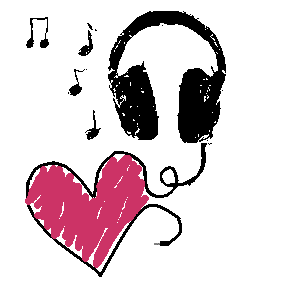
We are thinking about having Alexis try music therapy but before beginning I decided to some more research, I thought it may be beneficial for me to share what I find.
Music therapy can be defined as an evidence-based and clinical treatment that uses music interventions to accomplish individualized objectives. The functionality of the social, behavioral, psychological, communicative interaction and all other cognitive senses are developed. Harmony remains to be a powerful and non-invasive, whose consequences are something unique.
This therapy with its unique properties of the symphony assists in affecting the behavior. The treatment procedure facilitates the development of skills. The musician and the autistic relationship are structured based on the elements of music that would aid the patient to grow and cope better in this competitive world.
Autistic Individual and the Symphony
The brain waves of autistic children have shown to react and process harmony in a unique, abnormal way. Research has found that the undifferentiated cortex play an important role in the attentive power of the individual. The music created is found to stimulate the brain cells and success can be accomplished by using simple harmonic tones one at a time.
The following benefit may be noticed:
• Heightened interest and response level, which ensured that this therapy remains a preferred approach.
• With music spanning every human’s responses, the individual has the ability to grow and proceed from within.
• The harmonizing songs are malleable in nature making this treatment adaptable to each individual.
• Invigorating and enjoyable, the compositions can relate to human expressions, emotions and learning.
• Help in establishing the role as an individual, builds interaction and organization.
The Role of the Therapist
Working as direct or consultative services, they work either individually or in a group. Engaging various techniques, the children and the adults are involved in singing, playing, listening and being creative. These activities are instituted in a systematic manner that targets a particular response. A musical environment is created to encourage interactions and enables to process and express them. Trained professionals, they observe the behavioral pattern and asses them accordingly. To attain the necessary level of success, the treatment often requests the participation of the loved ones.
Autism is not a disease but a condition. Through a series of teaching aids and cognitive therapy, improvement can be brought about. The music therapy has also been found to bring about remarkable change.
Music has the power to strengthen the mind, heal the body, and unlock the creative spirit. Whether we experience music as a listener, performer, or teacher, it adds a significant dimension to our lives. I am excited to see how it benefits Alexis.